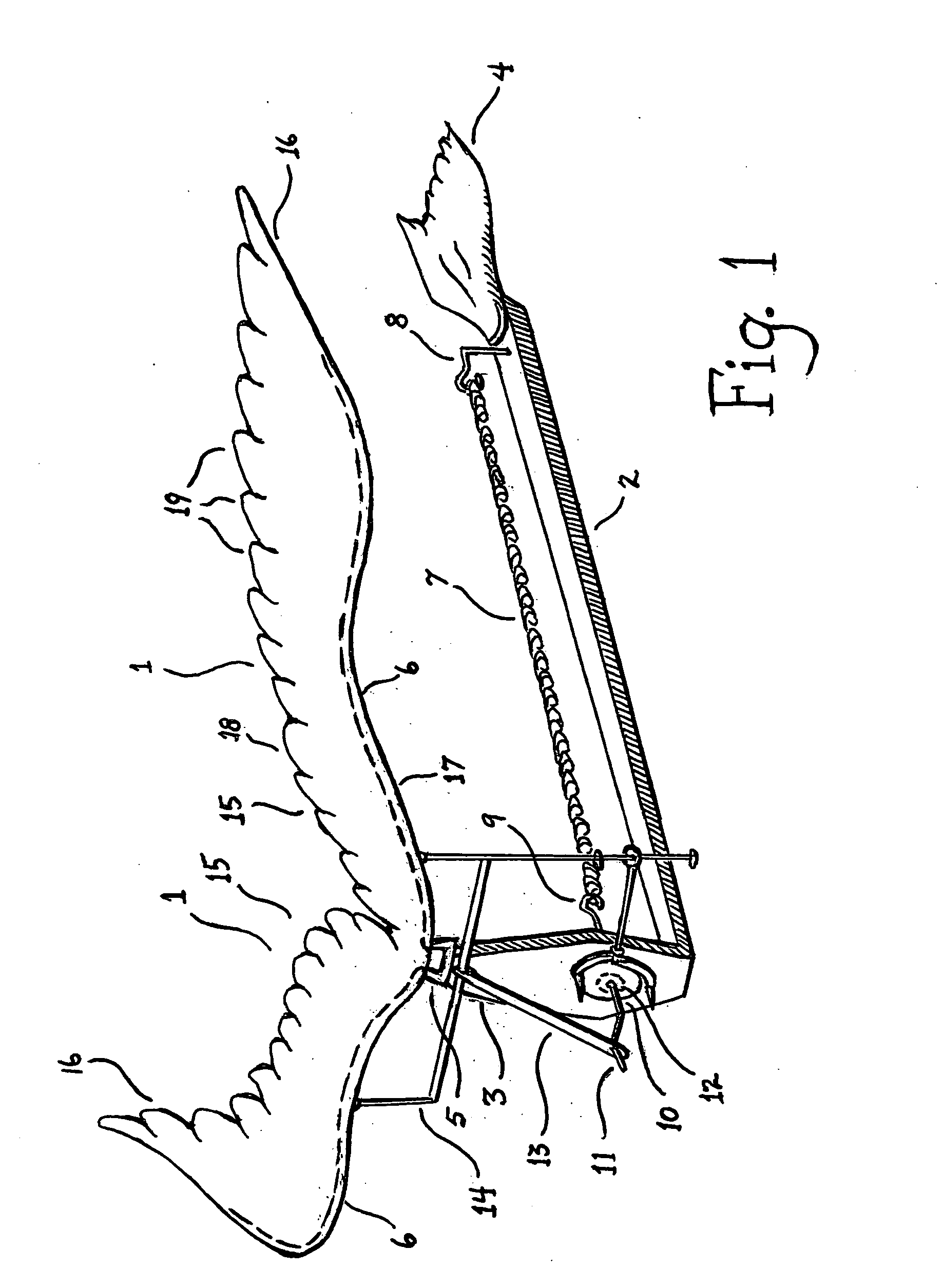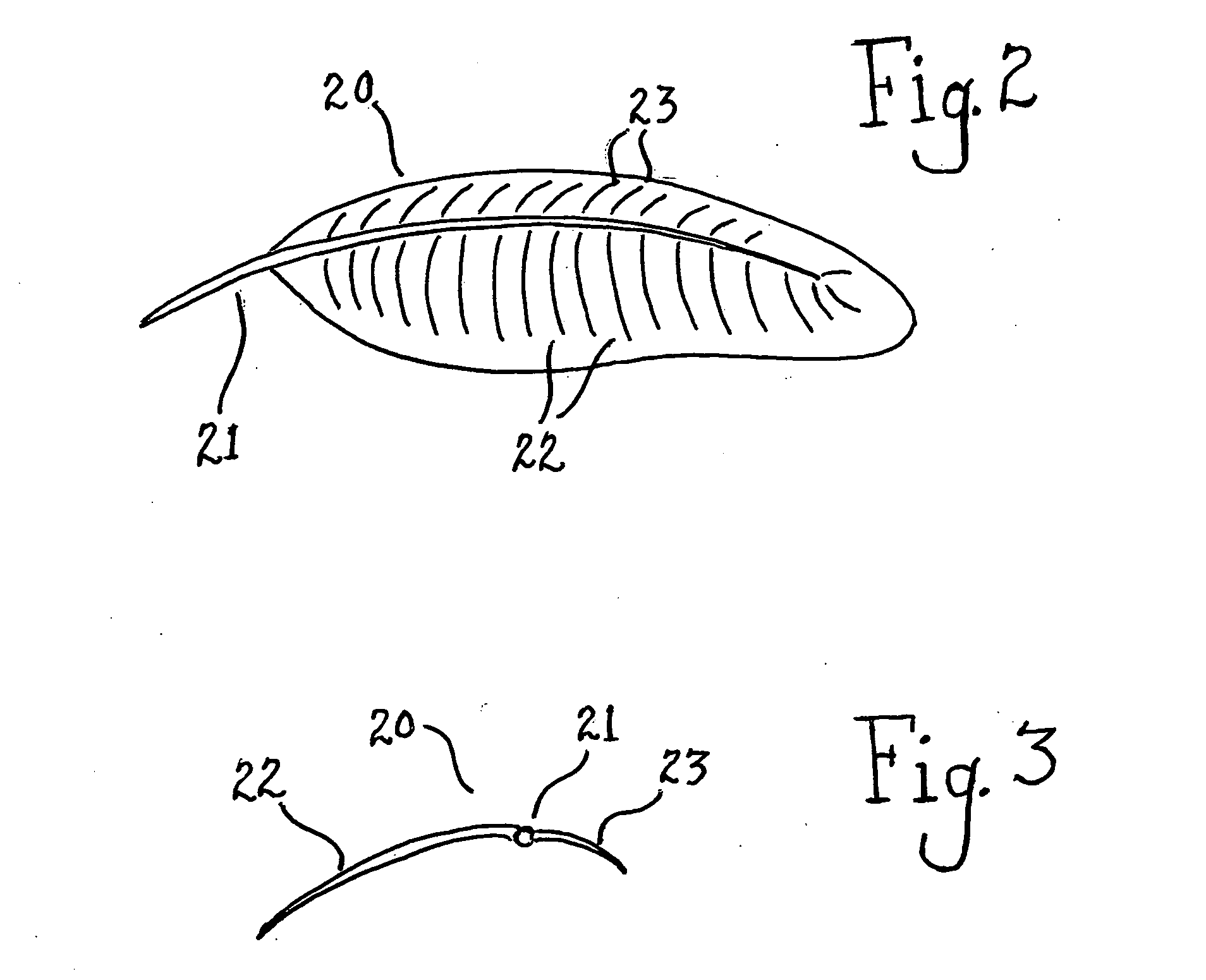Flying device utilizing natural principles
a flying device and natural principle technology, applied in the field of flying devices utilizing natural principles, can solve the problems of inability to fully understand the principles behind efficient flapping motion, inability to mimic the flapping motion of creatures, and inability to address all aspects of natural flapping motion, so as to save energy and reduce undesirable up and down movement , the effect of efficient forward propulsion
- Summary
- Abstract
- Description
- Claims
- Application Information
AI Technical Summary
Benefits of technology
Problems solved by technology
Method used
Image
Examples
Embodiment Construction
[0056] The instant device uses the natural principles for propulsion of organisms through fluids which have developed over millions of years of evolution. The device is an ornithopter which utilizes a combination of aspects of natural flight recognized through observation and experimentation of flapping propulsion to create such motion in man-made objects through air. Concepts presented herein relate to movement of creatures, such as birds, in air during periods of efficient powered flapping.
[0057] A preferred embodiment of the flying device is illustrated in FIG. 1. A lightweight ornithopter is propelled through the air by flapping motion of two flexible wings 1 connected fixedly to body 2 at vertical body extension 3 and stabilized in typical aerodynamic fashion by a rearward tailpiece 4. Wing crook 5 is a sharply curved portion of wing spar 6. Spar 6 is a highly elastic elongate extending internally along the span of wings 1 and supplies a substantial amount of flexure to the wi...
PUM
 Login to View More
Login to View More Abstract
Description
Claims
Application Information
 Login to View More
Login to View More - R&D
- Intellectual Property
- Life Sciences
- Materials
- Tech Scout
- Unparalleled Data Quality
- Higher Quality Content
- 60% Fewer Hallucinations
Browse by: Latest US Patents, China's latest patents, Technical Efficacy Thesaurus, Application Domain, Technology Topic, Popular Technical Reports.
© 2025 PatSnap. All rights reserved.Legal|Privacy policy|Modern Slavery Act Transparency Statement|Sitemap|About US| Contact US: help@patsnap.com



